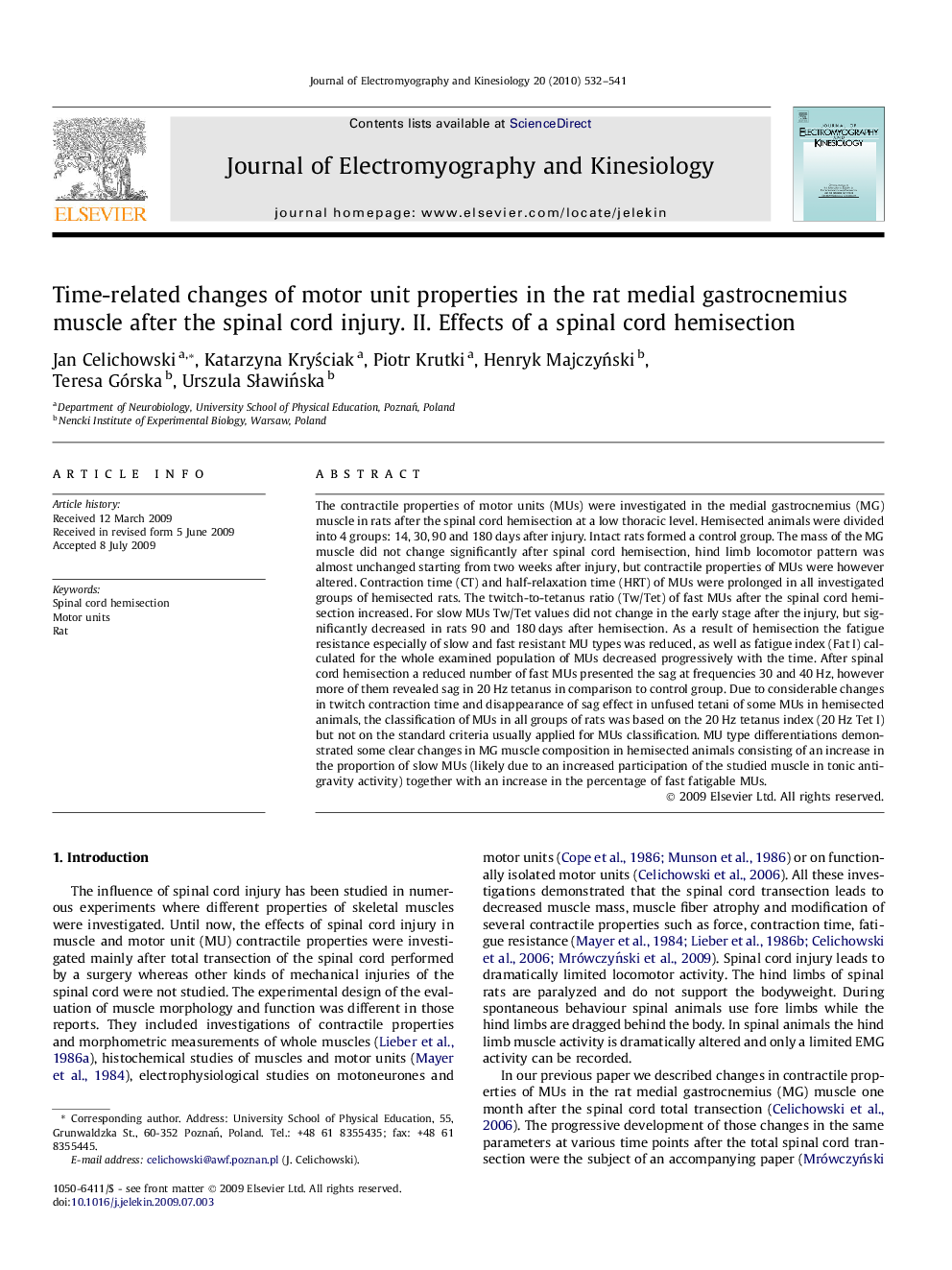| کد مقاله | کد نشریه | سال انتشار | مقاله انگلیسی | نسخه تمام متن |
|---|---|---|---|---|
| 4065202 | 1266243 | 2010 | 10 صفحه PDF | دانلود رایگان |

The contractile properties of motor units (MUs) were investigated in the medial gastrocnemius (MG) muscle in rats after the spinal cord hemisection at a low thoracic level. Hemisected animals were divided into 4 groups: 14, 30, 90 and 180 days after injury. Intact rats formed a control group. The mass of the MG muscle did not change significantly after spinal cord hemisection, hind limb locomotor pattern was almost unchanged starting from two weeks after injury, but contractile properties of MUs were however altered. Contraction time (CT) and half-relaxation time (HRT) of MUs were prolonged in all investigated groups of hemisected rats. The twitch-to-tetanus ratio (Tw/Tet) of fast MUs after the spinal cord hemisection increased. For slow MUs Tw/Tet values did not change in the early stage after the injury, but significantly decreased in rats 90 and 180 days after hemisection. As a result of hemisection the fatigue resistance especially of slow and fast resistant MU types was reduced, as well as fatigue index (Fat I) calculated for the whole examined population of MUs decreased progressively with the time. After spinal cord hemisection a reduced number of fast MUs presented the sag at frequencies 30 and 40 Hz, however more of them revealed sag in 20 Hz tetanus in comparison to control group. Due to considerable changes in twitch contraction time and disappearance of sag effect in unfused tetani of some MUs in hemisected animals, the classification of MUs in all groups of rats was based on the 20 Hz tetanus index (20 Hz Tet I) but not on the standard criteria usually applied for MUs classification. MU type differentiations demonstrated some clear changes in MG muscle composition in hemisected animals consisting of an increase in the proportion of slow MUs (likely due to an increased participation of the studied muscle in tonic antigravity activity) together with an increase in the percentage of fast fatigable MUs.
Journal: Journal of Electromyography and Kinesiology - Volume 20, Issue 3, June 2010, Pages 532–541